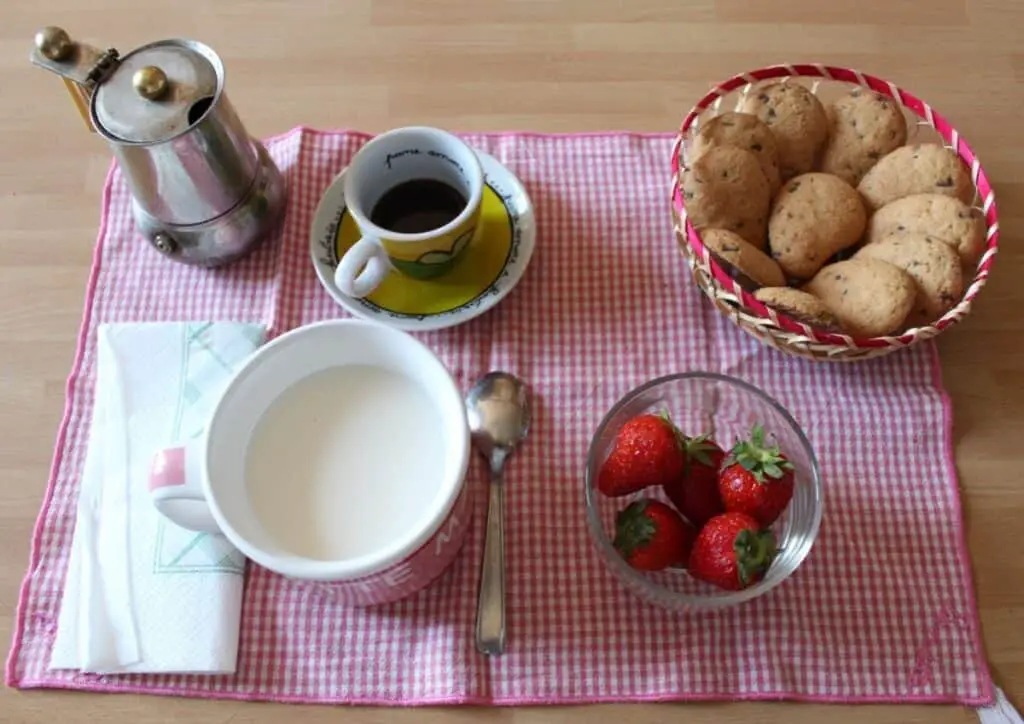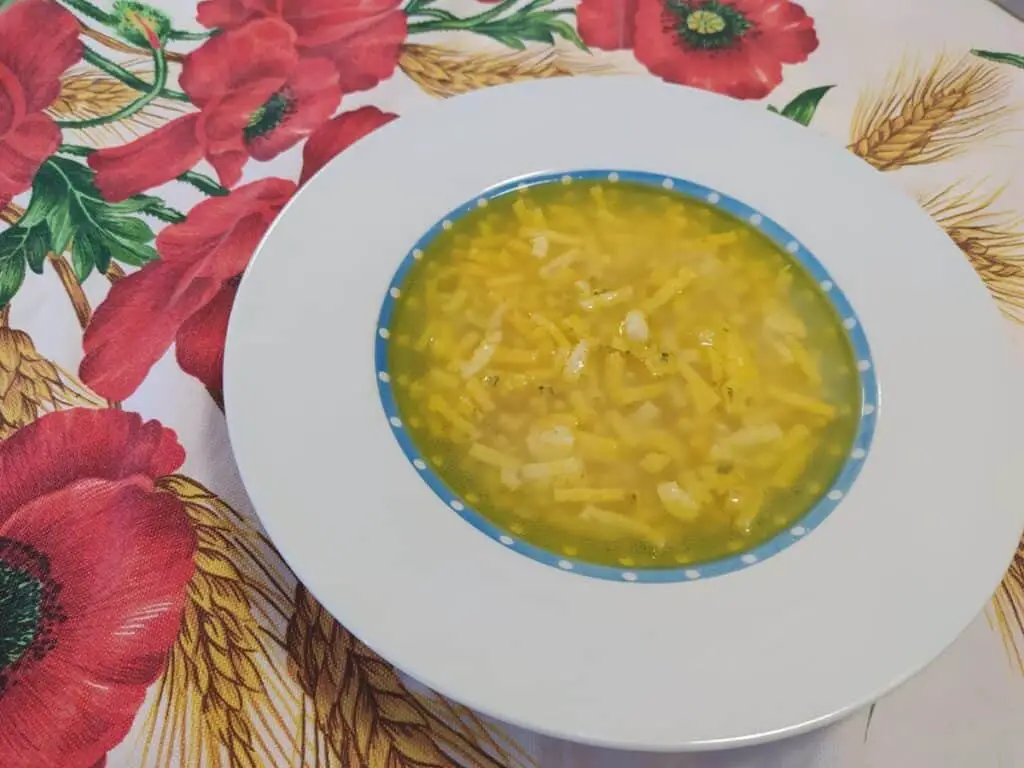If you have been to Italy, you may have been to a restaurant, or may have been invited to someone’s house for a meal.
If you have been in a situation where you were served to much food, and could not finish, or if you have any meals planned with an Italian family, this article is for you.
I will answer your questions on Italian etiquette regarding finishing, or not finishing, your food, Italian hosts at home and at the restaurant, regional variations in how much food is served and how many courses there are in a traditional Italian meal.
Keep reading to find out more
What is the Italian etiquette on wiping your plate clean?
The Italian “Galateo”, or guidance on etiquette, or polite behaviour, suggests that you should not completely wipe your plate clean.
Leaving a small amount of food on your plate at the end of a course indicates that you are someone who can be satisfied easily and that you did not arrive at the meal excessively hungry.
According to the Italian etiquette, leaving a small amount of food on your plate at the end of a meal makes you look like a more refined person.
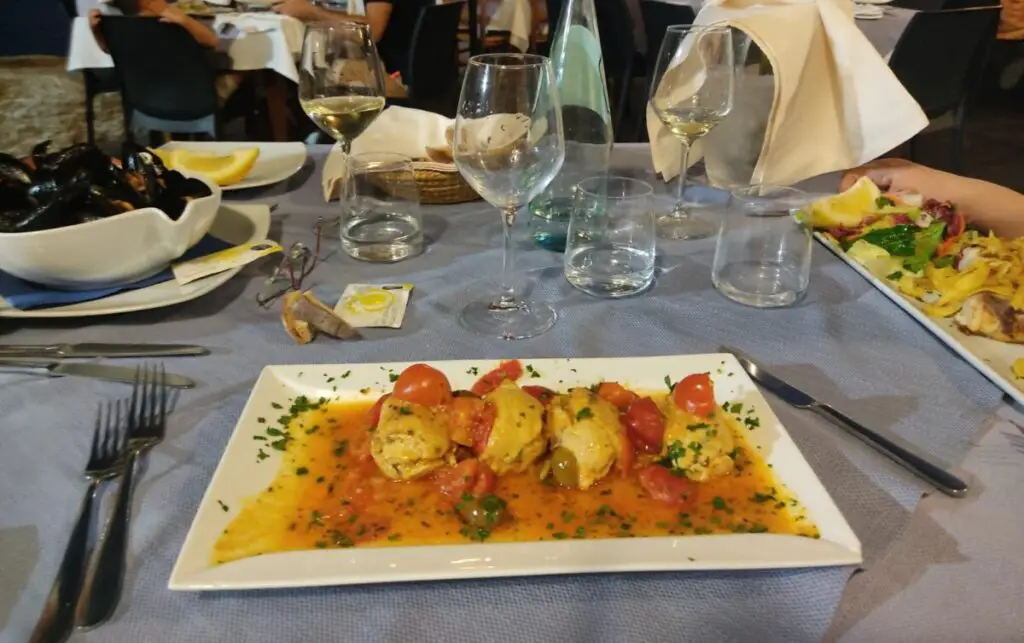
In practice, however, Italy is a country that has been through periods of poverty when food was scarce in more than once circumstance, and this has given rise to a culture of appreciation for food and eating and so wiping your plate clean is not looked down on, unless the context is formal.
In family situations, and informal situations among friends, and in informal restaurants if someone wipes their plate clean in Italy, the host would be pleased, as this indicates that their food has been appreciated. Asking for more of the same course would equally please the host.
Italians have a habit that they call “la scarpetta”, which consists in wiping your plate clean using bread. This is strictly for informal contexts, however, and possibly to be avoided depending on how formal the situation is.
What is the Italian etiquette on not finishing your food?
In Italy it is not offensive to refuse to eat more of something, or leave a small amount of food on your plate, so don’t worry if you don’t feel like eating everything. Leaving a small amount of food on your plate is in keeping with the Italian etiquette, so you don’t run the risk of being rude or offensive if you don’t feel like finishing everything on your plate.
Regional variations in how much food is served across Italy
In some southern Italian regions such as Calabria, Puglia and Sicilia, constantly re-filling your guest’s plate is considered a sign of attentiveness to them and care for them and is common practice. This depends on individuals too however, and not all southern Italian hosts fit this description.
Southern Italians at home and in family-run, informal restaurants tend to serve more food than northern and central Italians.

You may find that informal restaurants in Italy (also called “Osteria” or “Trattoria”) might not focus on presentation as much, but their portions are usually very large, especially in southern Italy.
Informal Italian restaurants sometimes serve home-made food which is as good, if not better, than the food served in high-end restaurants.
Will an Italian host be offended if I don’t want any more food?
If you are invited to someone’s home
Within a family setting, women usually look after the cooking, although sharing of household tasks has been changing in recent years in Italy as well as globally. Within a restaurant setting a chef is still prevalently a male profession.
As a general rule, the host when you are invited to someone’s home in Italy is usually a woman, and usually over the age of 45 or 50, mainly because there has been a shift in the younger generations to become more career focussed, and so younger people do not fit the stereotype of the typical Italian host as much.
Some Italian hosts, especially in southern Italy, can be quite generous with their portions, and usually ask the guest throughout the meal if they would like more and can be very insistent about guests having second servings.
I interviewed a lady in her seventies, who is from Sicily, around Italian food culture and this is what she said:
In certain circumstances, by being excessively attentive to their guests (people in southern cultures) may become intrusive.
There is a popular Italian TV series called Don Matteo where the protagonist, who is the town priest, is sometimes invited to his friends’ home, a couple in their mid forties. The wife, who is originally from Sicily, not only serves very large portions of food, but is also insistent in constantly offering more to Don Matteo.
This shows how southern Italian hosts are seen as overly caring by Italians themselves, and this can be an object of comedy.

There may be circumstances, depending on where you are in Italy, when you might be invited to help yourself more than once to the same course. If you are offered second servings, it is absolutely fine to decline.
It is not rude or offensive to the host to say that you are full and leave a small amount on your plate, or refuse to have second servings. Likewise, if you decide that you do want some more, or wipe your plate clean, your host will be pleased because this is an indication that you really enjoyed the food.
Here is some advice from the Italian lady I interviewed:
If they find themselves in a situation where the host is insisting that they have a second or third serving of the same course, it’s absolutely fine to decline without worrying that they may be rude.
If you are at the restaurant
At the restaurant in Italy, similarly to a home setting, it is not rude or offensive to the chef to leave a small amount of food on your plate. According to the Italian etiquette, this is in fact advisable, depending on the formality of the situation.
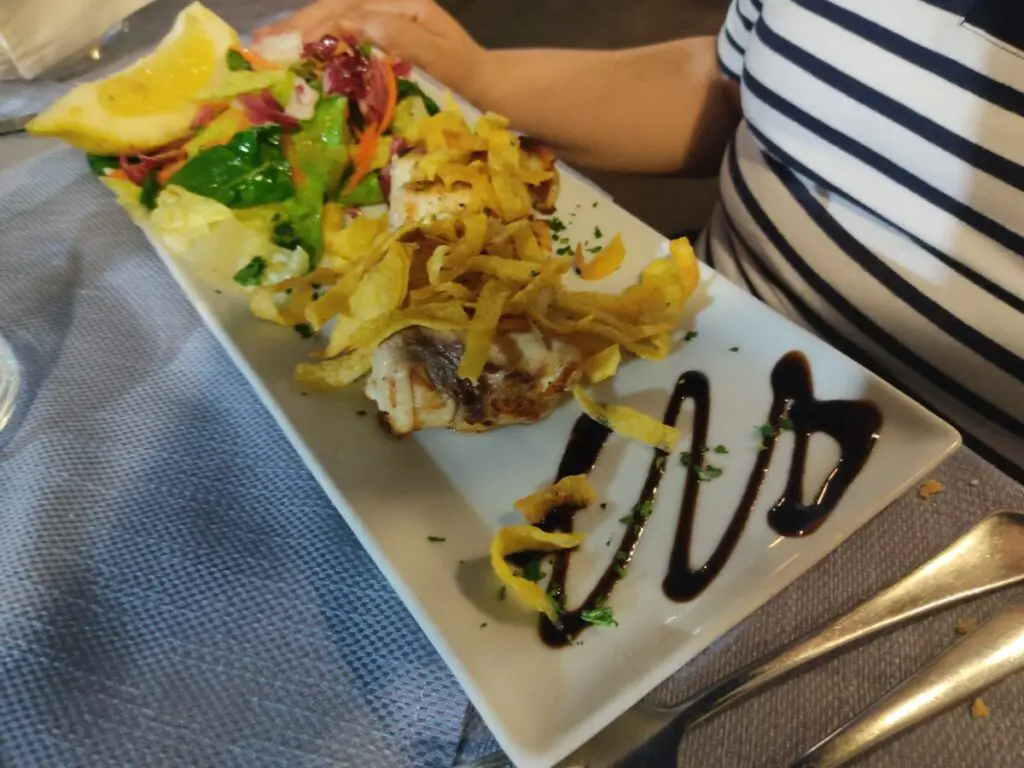
In a family-run restaurant, there is a slight chance that the owner themselves might come and check how you are doing and, depending on how large an amount you have left on your plate, they might ask you if you did or didn’t enjoy your food:
- Ha gradito? – (more formal) have you enjoyed (the food)?
- Tutto bene? – Was everything OK?
If you didn’t manage to finish your food, but enjoyed it, some polite ways to respond could be:
- Ho gradito moltissimo ma sono gia sazio/a – I’ve enjoyed (the food) very much but I’m already full
- Era tutto buonissimo ma sono sazio/a, grazie – It was all very good, but I’m full thank you
As a general rule, when you leave some food on your plate in a restaurant in Italy, none of the staff will say anything, especially if the place is very busy.
How can I deal with an insistent host when eating in Italy?
You are much more likely to encounter a very insistent Italian host in a family setting than a restaurant setting.
When declining the offer to have more food, if you make it clear that you really enjoyed the food and compliment the host, there is no risk to offend them, and no need to go into detail as to why you don’t want any more.
Even if the host is insistent, there is no obligation to provide a reason as to why you’re full, or any details on your food habits to justify yourself, if you don’t want to.
Insistency in offering food is a traditional custom for some Italian people, especially if they belong to older generations, but, if the host is a rational person, they would have no reason to be offended, especially since you made it clear that you appreciated the food.
Here are some sentences to help you decline food, or say that you are full:
- Complimenti al cuoco, ma sono già sazio/a
“Congratulations to the chef, but I’m already full” – this is a slightly more formal option
- Ringrazio, ma rifiuto perchè sono sazio/a
“Thank you but I’ll decline because I’m full” – this is also a slightly more formal option
- Grazie, è buonissimo ma sono apposto così, perchè di solito non mangio molto
“Thank you, it’s delicious but I’m OK, because I don’t eat a lot usually”
- Posso avere una porzione piccola, per favore, perchè mi riempio presto
“Can I have a small portion please, as I fill up quickly”
What are the Italian dishes and which order are they served in?
In Italian homes if the meal is to celebrate a special occasion, it’s possible that you might get a full set of courses because giving guests a lot of food is part of the culture around Italian hospitality.
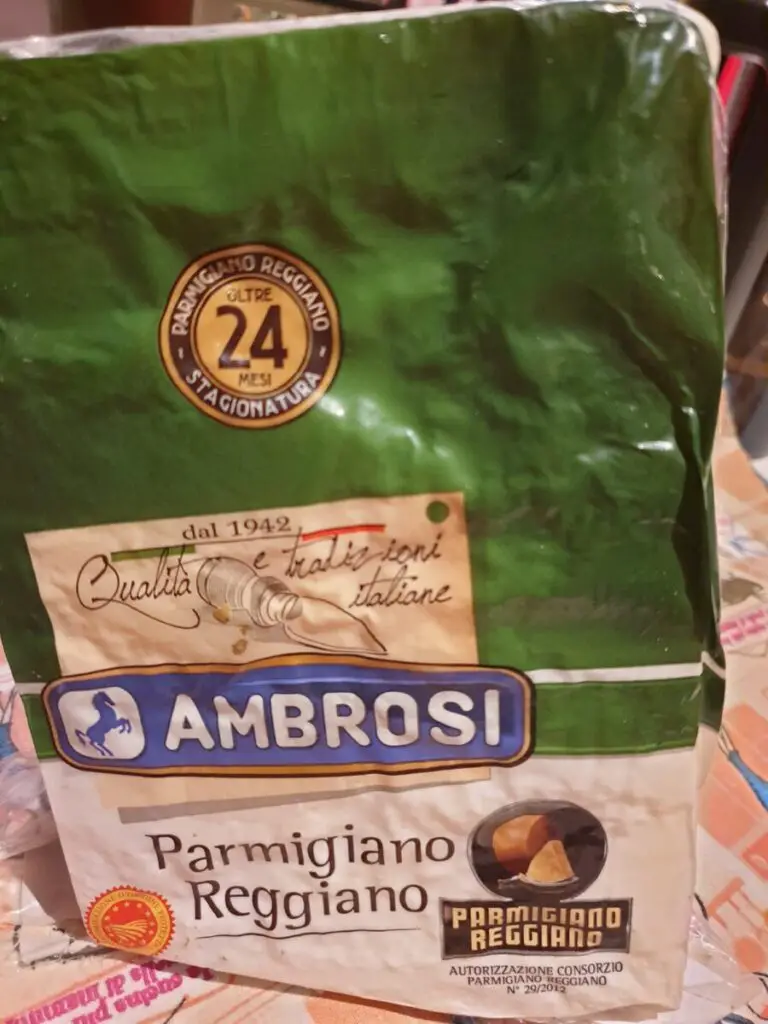
Special occasions celebrated in Italian families include:
- Name days (“onomastico” – the celebration of someone’s name, which corresponds to the day when a specific saint is celebrated)
- Birthdays
- Graduations
- Birth of a child
- Engagements
- Christmas
- New Year’s Eve
- Easter
It’s very possible that, if you are invited to someone’s house to celebrate a special occasion, the full range of Italian courses may be served:
- Antipasto – starter
- Primo (or more than one “primo”) – first course
- Secondo (or more than one “secondo”) – second course
- Contorno (or more than one “contorno”) – side
- Dolce – dessert
A celebration meal in Italy also usually includes more than one type of wine to accompany the specific course. A typical order of wines may be:
- White/ red wine
- Sweet wine such as “passito” with dessert
- Spumante or prosecco if there is a toast at the end
When you are invited to someone’s house in Italy as a guest but there is no special occasion to celebrate, a typical meal typically consists of:
- Primo (first course)
- Secondo (second course)
- Contorno (side)
- Frutta (fruit to close the meal, as desserts are mostly for special occasions)
The antipasto (starter) is the course that is usually left out in the more everyday situations, and there is rarely antipasto in an everyday Italian meal.
In more recent years more Italians have changed their eating habits to include just a single course (called “piatto unico”) during the working week.
The “piatto unico” is a meal which contains all the necessary nutrients but within one single course, such as a pasta salad or a curry, more similar to how people eat in the US and UK.
Traditional Italian meals are divided into separate courses so, if a guest is present, the host won’t serve just one course (“piatto unico”). Single-course meals are reserved for the closest family, and only eaten within the working week. In the Italian culture, it’s common practice to make a guest feel special by serving more food than the family would normally eat if they were on their own.


